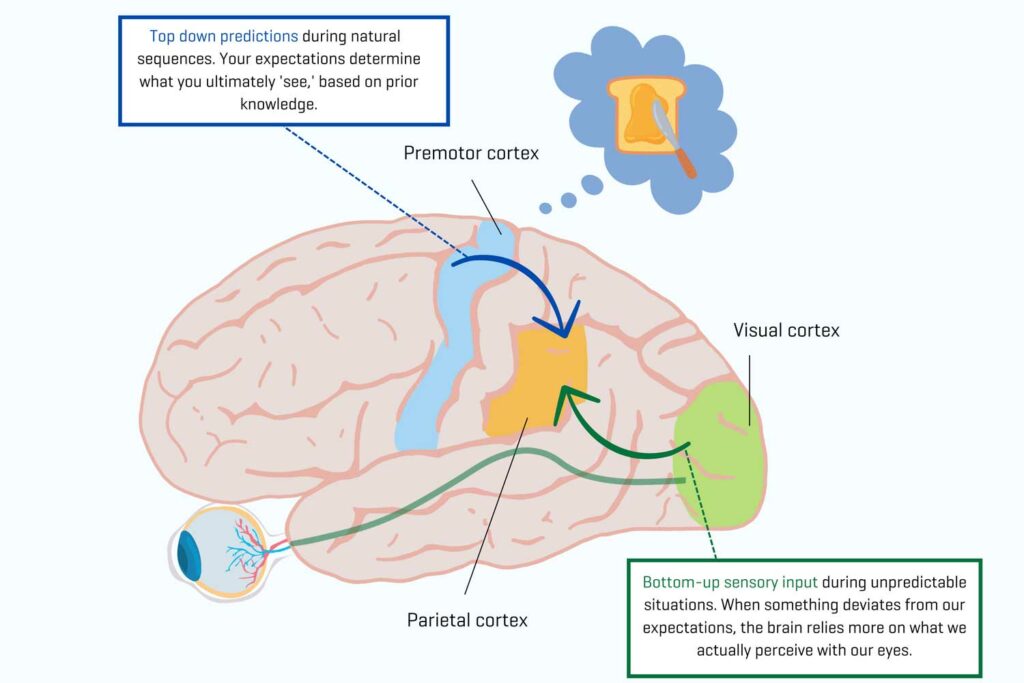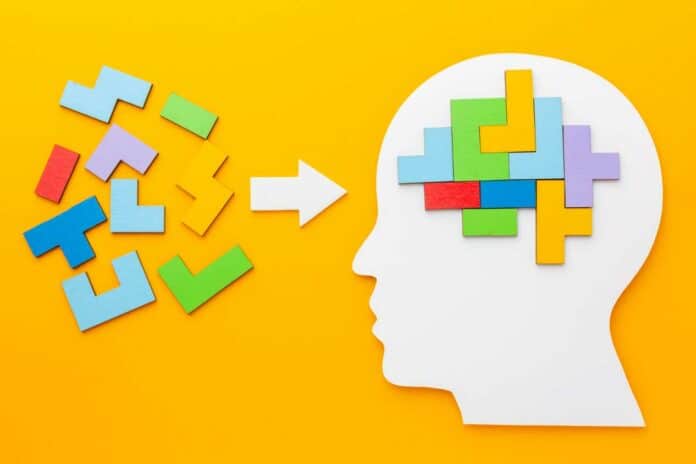How the brain processes the observed actions of others is a question of enduring interest. The network of brain regions recruited by action observation (action observation network, AON) has been mapped in some detail by having monkeys and humans view isolated actions, typically lasting a couple of seconds, such as grasping or manipulating objects.
Researchers at the Netherlands Institute for Neuroscience offer an exciting insight: our perception of others’ actions relies more on our expectations than we thought before.
People previously assumed that specific brain regions become activated in a particular sequence: first, we see what others do, which activates visual brain areas, and then later, regions in the parietal and premotor areas, which we typically use for performing similar actions ourselves.
It was believed that this flow of information, from visual input to our actions, helps us understand what others are doing. This belief was based on studies of brain activity in humans and monkeys while they observed simple actions, like picking up a knife, presented in isolation in a lab setting.
However, in real life, actions rarely occur in isolation; instead, they follow a predictable sequence with a goal in mind, such as making breakfast. How does our brain handle this?

The study offers an exciting insight: when we watch actions happening in meaningful sequences, our brains pay less attention to what we see and rely more on predictions of what should happen next based on our motor system.
Christian Keysers, a senior study author and director of the institute’s social brain lab, said, “What we would do next becomes what our brain sees.”
Researchers reached this conclusion by measuring brain activity directly from the brains of epilepsy patients who participated in intracranial eeg-research for medical purposes. Such analyses involve measuring the brain’s electrical activity using electrodes not on the skull but under it.
The benefit of this technique: It allows us to directly measure the electrical activity the brain uses to work.
In the experiment, participants watched a video of someone doing everyday tasks like making breakfast or folding a shirt. Their brain activity was measured using implanted electrodes while they watched the video under two conditions. In one condition, the actions unfolded in the usual sequence, like picking up a bread roll, then a knife, cutting the roll, and so on. In the other condition, the actions were shuffled randomly.
Even though participants saw the same actions in both conditions, their brains could only use their knowledge to predict what would happen next when the steps were in the natural order.
Through advanced analyses conducted in collaboration with Pascal Fries of the Ernst Strüngmann Institute (ESI) in Germany, the research team discovered that when participants watched the reshuffled, unpredictable sequence, the brain followed the expected flow of information. It started with visual brain regions, which process what the eyes see, and then moved to parietal and premotor areas, which control our actions – aligning with the classical model. However, the brain activity changed significantly when participants watched the natural sequences.
Valeria Gazzola said, “Now, information was actually flowing from the premotor regions, that know how we prepare breakfast ourselves, down to the parietal cortex, and suppressed activity in the visual cortex. It is as if they stopped to see with their eyes and started to see what they would have done themselves.”
Their discovery aligns with a broader understanding in the neuroscience community: our brain doesn’t just react to external stimuli; it predicts what will happen next. This predictive nature means that expected sensory input is often suppressed, and we perceive the world based on these internal predictions rather than solely on external inputs. However, if what we see contradicts our expectations, this suppression fails, and we become aware of the actual sensory input rather than what we anticipated.
Journal Reference:
- Chaoyi Qin, Frederic Michon et al. Predictability alters information flow during action observation in human electrocorticographic activity. Cell Reports. DOI: 10.1016/j.celrep.2023.113432
